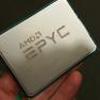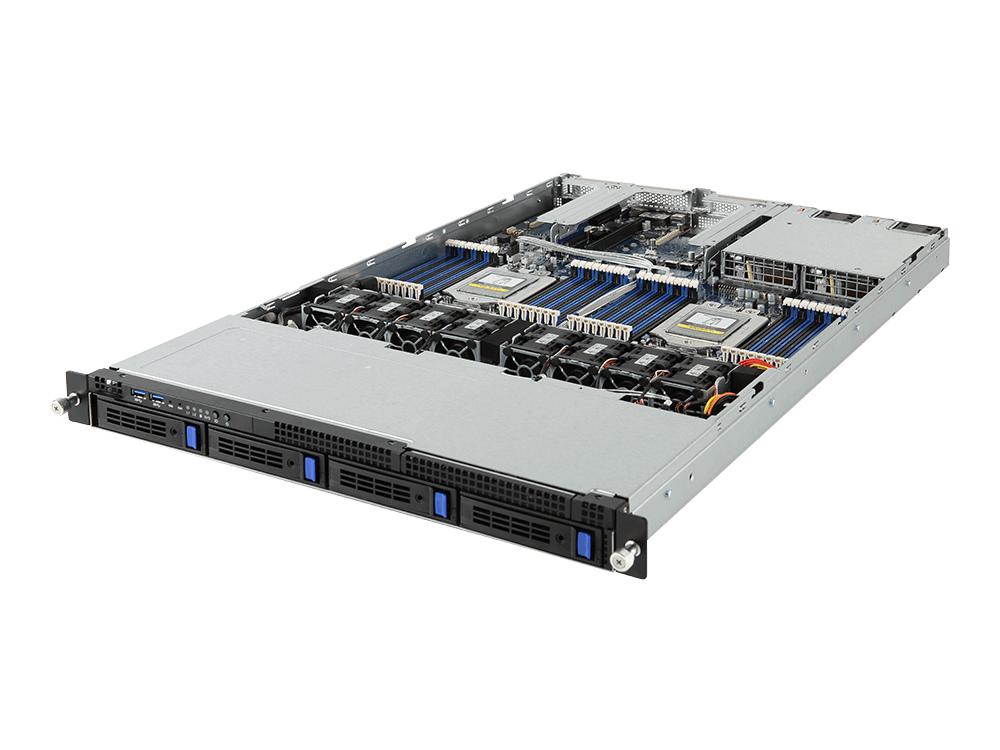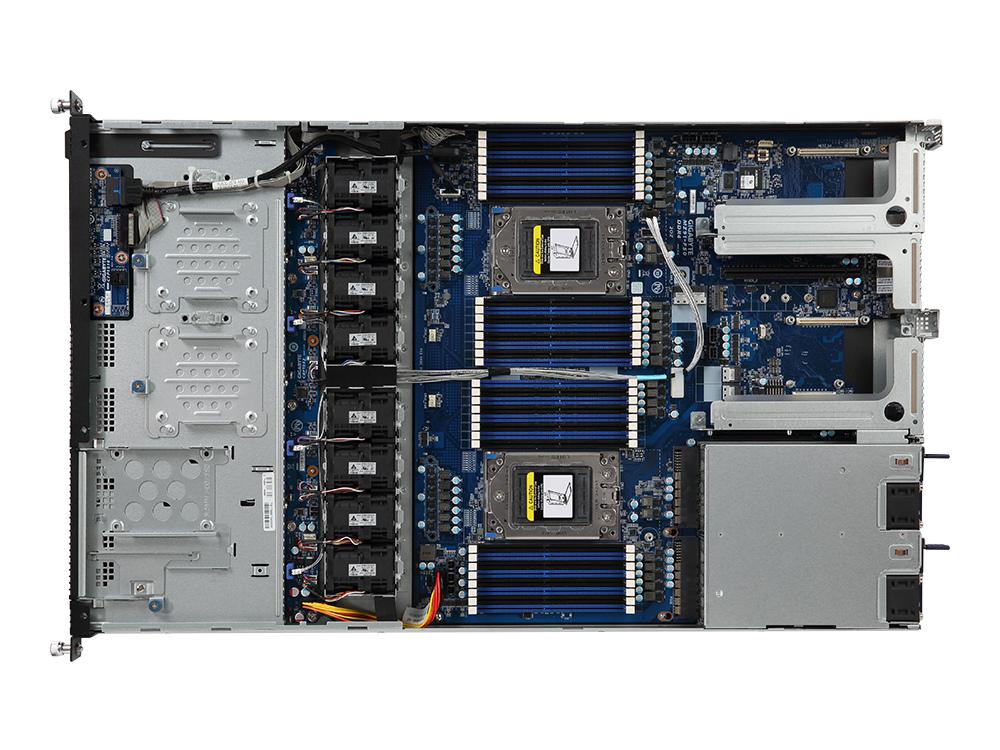Gigabyte refreshed its AMD EPYC 1U and 2U server line-up with a range updated options supporting different storage device combinations, with increased NVMe connectivity to integrate denser, high bandwidth storage.
hese five systems are part of GIGABYTE’s ready-to-integrate general purpose Rack Server family, equipped with the best power supplies and cooling fans and combining a high level of performance, energy efficiency and overall reliability for web hosting, mass storage, virtualized infrastructures, databases & analytics and other demanding applications.
GIGABYTE’s AMD EPYC™ server systems are based on the 7000 series EPYC™ processor, offered as a SoC and incorporating a multi-die design with 32 cores per processor, 128 PCIe lanes and 8 channels of DDR4 memory. These features have allowed GIGABYTE to create a range of servers that pack a real punch in flexibility and expansion options. First released in July last year, adoption of GIGABYTE’s AMD EPYC™ servers has been gaining momentum, lowering TCO for datacenters by offering an optional balance of compute, memory, I/O and security.

The five refreshed GIGABYTE AMD EPYC™ server products are: the 1U form factor R181-Z90, R181-Z91 and R181-Z92, and the 2U form factor R281-Z91 and R281-Z92.
These five systems all support dual AMD EPYC™ 7000 series processors with 32 DIMM slots. Storage wise, the R181-Z90supports 4 x 3.5" hot-swap SATA/SAS drives, the R181-Z91 supports a mix of 2 x 2.5" hot-swap NVMe U.2 drives and 8 x hot-swap 2.5” SATA/SAS drives, while the R181-Z92 supports 10 x 2.5" hot-swap NVMe U.2 drives.
Meanwhile, the R281-Z91 supports a mix of 6 x 2.5" hot-swap NVMe U.2 and 20 x 2.5" hot-swap SATA/SAS drives, and the R281-Z92 supports 24 x 2.5" hot-swap NVMe U.2 + 2 x 2.5” hot-swap SATA/SAS drives. These five systems also all feature 1 x NVMe M.2 slot for an additional ultra-fast storage device.

Systems that support more dense, high-bandwidth storage can extremely suited for applications such as Big Data, where memory size and performance to store these large volumes of data during processing is becoming more and more important. A comparison of the main specifications of each model can be found in the following table:
| Model | R181-Z90 | R181-Z91 | R181-Z92 | R281-Z91 | R281-Z92 |
|---|---|---|---|---|---|
| CPU | Dual AMD EPYC™ 7000 series processors | ||||
| DIMM | 8-Channel RDIMM/LRDIMM/NVDIMM DDR4, 32 x DIMMs | ||||
| LAN | 2 x 1GbE LAN ports | ||||
| Storage | 4 x 3.5" hot-swappable HDD/SSD bays | 2 x 2.5" U.2 + 8 x 2.5” SATA/SAS hot-swappable HDD/SSD bays | 10 x 2.5" U.2 hot-swappable HDD/SSD bays | 6 x 2.5" U.2 + 20 x 2.5" SATA/SAS hot-swappable HDD/SSD bays | 24 x 2.5" U.2 + 2 x 2.5” SATA/SAS hot-swappable HDD/SSD bays |
| Expansion Slots | 3 x low profile PCIe Gen3 expansion slots | 3 x low profile PCIe Gen3 expansion slots | 2 x low profile PCIe Gen3 expansion slots | 5 x full height + 2 x low profile PCIe Gen3 expansion slots | 5 x full height + 1 x low profile PCIe Gen3 expansion slots |
| 2 x OCP Gen3 x16 mezzanine slots | |||||
| 1 x M.2 PCIe slot | |||||
| PSU | 2 * 1200W 80 PLUS Platinum redundant PSU | 2 * 1600W 80 PLUS Platinum redundant PSU | |||
These different size and storage combinations, using the flexibility offered by the EPYC’s I/O capabilities, allow the customer to choose the best system to suit their technical requirements and budget. Building on the advantages offered by the AMD EPYC platform and using our industry-leading hardware design expertise, GIGABYTE continues to deliver even more choice and value our customers worldwide.



